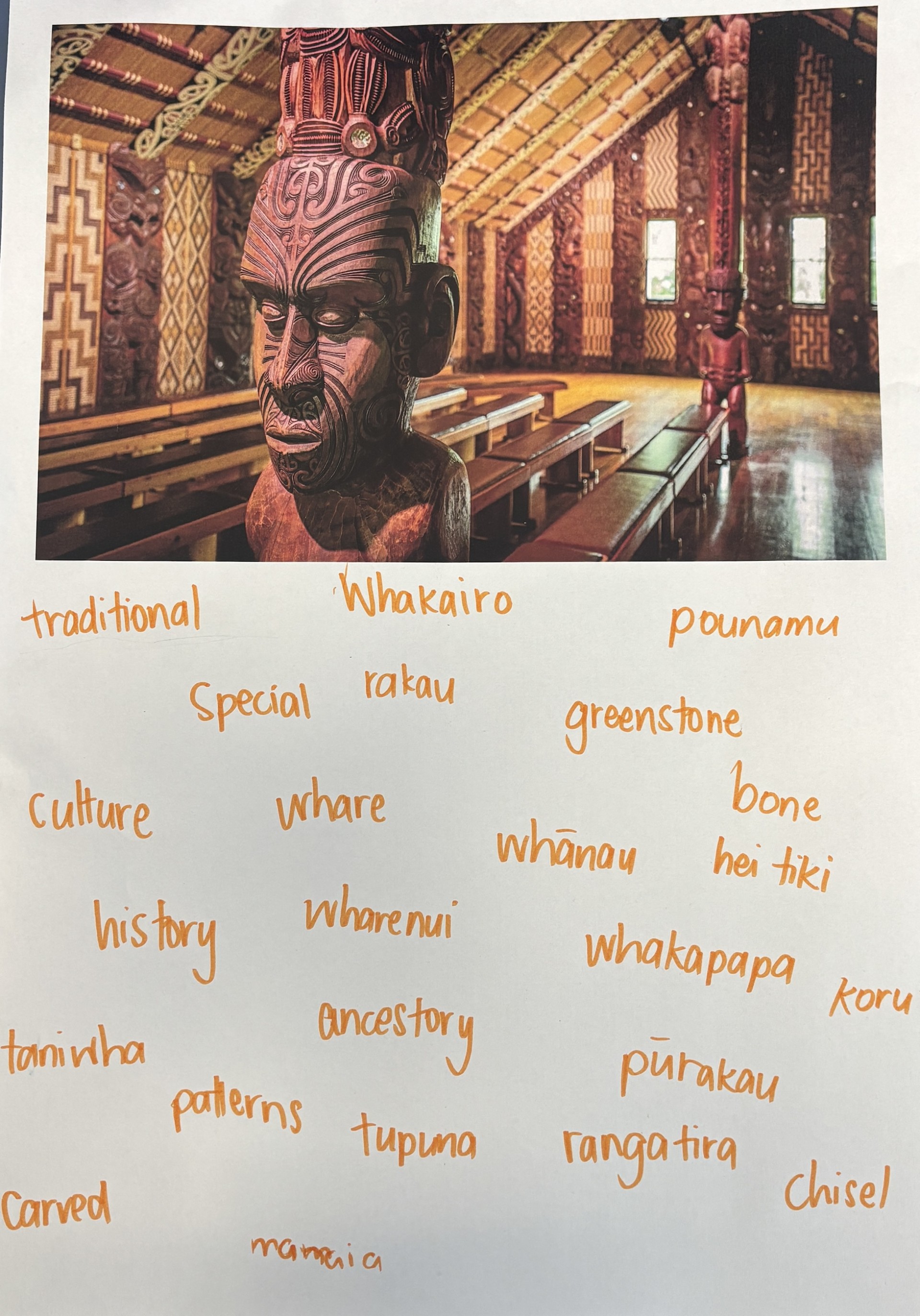Words can do more than describe, though. When selecting meaningful words, it can create an image and give the reader a chance to connect with what they are reading and gain a deeper understanding of a topic.
When we use descriptive words, they give more detail about the topic instead of just random words. It also gives a deeper explanation, while just normal and ordinary sentences just say something and don’t make the reader picture the topic in their head.
Over the past few weeks, students have been exploring different types of Māori art and writing explanations about different art forms. They did this by looking at images and researching the meanings behind patterns, symbols, and art types. Each lesson focused on a distinct art form, such as whakairo (carving), tukutuku (woven panels), tā moko (facial tattooing), and raranga (weaving). Students included its history, how it is made, and why it is important to individuals, iwi (tribes), and hapū (sub-tribes).
Before writing, learners looked carefully at the art examples shown and talked about what they noticed. Together, they came up with useful words to describe shapes, patterns, materials, and meanings behind the pieces of art. The words were put on a class wall to help students remember how to spell them and to remind them to use them in their writing.
Through this process, students discovered that many te reo Māori words carry deep cultural meanings that cannot easily be translated. Even the importance of macrons on reo Māori words could change the entire meaning.
“Some of the new words I learnt were ahi kaa, generations, culture, whakapapa and harakeke. I learnt it’s important to add the macrons to Māori words because it could mean a different word if you don’t.”
During shared writing lessons, learners collaborated on paragraphs together. Each explanation had three parts:
-
Paragraph one: what the art is and what it looks like
-
Paragraph two: how it is made or its history
-
Paragraph three: why it is important and what it represents
Using topic-specific vocabulary helped learners make their writing clear. They practised using sentences that explained their ideas and showed what they had noticed. Through this practise, students began to choose precise, topic-specific, and culturally respectful words to help their writing sound more thoughtful and accurate.
The final explanations show how students are growing as writers who use words to express ideas clearly and respectfully. Through exploring Māori art, they also discovered that language carries culture and meaning. By choosing words carefully, especially te reo Māori vocabulary, students found ways to write that honoured both the art and the stories behind it.








Comments
No one has commented on this post yet.